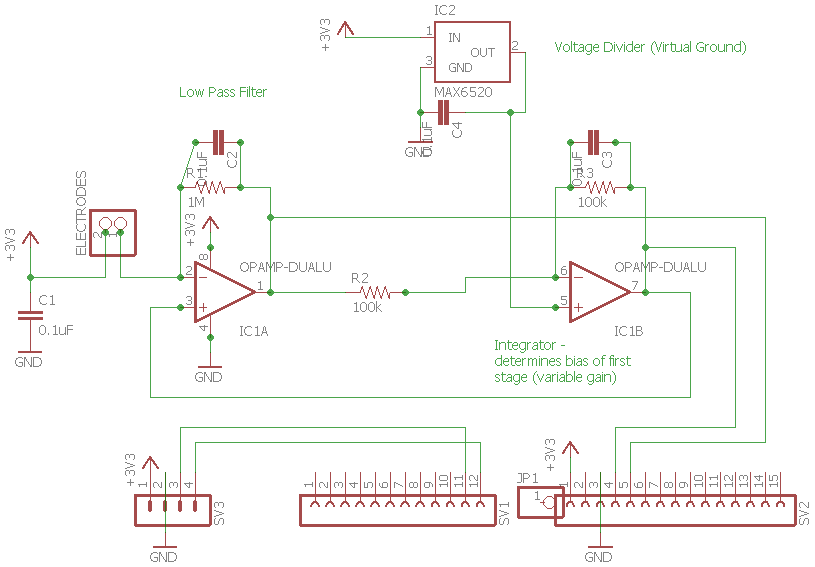Initially i visualized a watch like design to house the sensors etc. that could be worn but I've now moved to using a wristband instead. The reasons for this change are: comfort (a soft, mildly stretchy wrist band - think sweat band - is more comfortable than a watch band) and better sensor placement for the heart rate sensor and for the GSR sensor.
In addition to the above changes, I've also decided to switch to the Maxim breakout board (MAXREFDES#117) due to its better stability (and my better understanding about how to use it) as well as switching to a different circuit design for the GSR sensor module.

The above circuit is taken from: A Wearable Sensor for Unobtrusive, Long-Term Assessment of Electrodermal Activity. IEEE Transactions on Biomedical
Engineering. Vol. 57 No.5 May 2010 (with some minor changes - primarily the addition of the MAX6520 precision voltage divider). This circuit seems to need less adjustment between individuals. I've had to play around with the code for this setup (uses 2 analog readings to then calculate GSR) to ensure that I get enough resolution in the resultant signal. I may add an additional amplifier stage to each of the analog signals.
In the same article this circuit design came from, the researchers tested the palmar side of the wrist for GSR measurements compared to fingers and both were equally as accurate. In addition, there tests involved longer periods (one subject wore the sensor for an entire week, comfortably) and their wrist band with Ag/AgCl electrodes showed little in the way of motion artifacts, etc., basically it was able to provide a stable and consistent signal even with a subject engaging in daily activities of living.
As for the pulse sensor, further research led me to conclude the the back of the wrist is a poor site for recording a photoplethysmography signal (due to a lower concentration of surface capillaries). Thankfully, through experimentation, I found that the radial side of the palmar portion of the wrist seems to provide consistent readings when compared to a Polar Chest strap.
The Adafruit Feather Bluefruit seems to be a perfect choice so far. I've been able to get the BLE communication working though I am still figuring out how to send the sensor data (I can manually send data from the serial monitor and receive it on an iPhone using Adafruit's Bluefruit Application iOS App / Android App
Presently I have everything on a breadboard with leads to the sensors held in place on my wrist with a wristband.
 Tom Meehan
Tom Meehan
Discussions
Become a Hackaday.io Member
Create an account to leave a comment. Already have an account? Log In.
Hey, may I ask why are you using the precision voltage reference rather of value 1.2V rather than a simple voltage divider? I do realise that it gives a more precise reference value, however in this case the improvement is insignificant as the other resistors would still impact the measurement result no? On top of that if you analyse the circuit properly (the second op-amp is simply acting as a differential amplifier with gain of 1, giving formula Vb = Vcc - Vb) you will notice that if you're using two resistor combination, then the formula for conductance simplifies to be 1/R1 * (Vb/Vo-1) and you will get rid of Vcc term, thus no longer depending on the stability and accuracy of it :)
Are you sure? yes | no
You are correct thank for the heads up!
Are you sure? yes | no